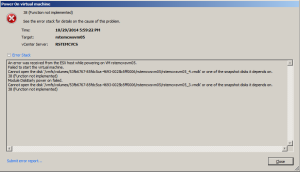With the rise of all-flash storage arrays, DBAs have been exploring the opportunity to use the native 4K sectors/4K logical block mode of flash drives.
Traditional spinning disk almost universally uses a 512-byte block, or in reality most arrays now use a 520-byte block with 8 bytes reserved for Data Integrity Field or DIF, but flash drives use a 4096-byte block instead, which many all-flash arrays now expose to the operating system if instructed to do so.
On an EMC XtremIO, the LUN block size may be selected at LUN creation time from the Logical Block Size drop-down.

Several popular operating systems including Windows Server 2012, Red Hat Enterprise Linux 6.0 and Solaris 11.1 support this new configuration.
The advantage is by writing 4K blocks, instead of 512-byte blocks, the all-flash array is not required to use a Read/Modify/Write shuffle to update 512 bytes with a 4K block. There are some modest performance benefits to doing this, but don’t expect anything radical in most cases.
However be aware that at present, with VMware ESX 5.5, the VMware hypervisor cannot work with LUNs that use a logical block size of 4K, even if they are presented as RDMs. If you try to attach native 4K LUNs to a guest OS as RDMs, the guest OS power-up will fail with:
38 (Function not implemented)

A VMware Knowledge Base article confirms this is expected behavior.
VMware Knowledge Base 2091600
When using VMware, be sure to specify Normal (512 LBs) from your XtremIO array.


